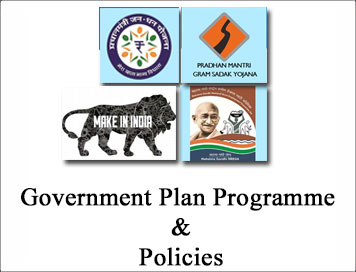(HOT) UPSC Current Affairs 2025 PDF
NEW! The Gist (NOV-2025) | E-BOOKS
Act East Policy: Government Plan Programme Policies for UPSC Exam

Government Plan Programme Policies for UPSC Exam
::Act East Policy::
India's Act East Policy focusses on the extended neighbourhood in the Asia-Pacific region. The policy which was originally conceived as an economic initiative, has gained political, strategic and cultural dimensions including establishment of institutional mechanisms for dialogue and cooperation. India has upgraded its relations to strategic partnership with Indonesia, Vietnam, Malaysia, Japan, Republic of Korea (ROK), Australia, Singapore and Association of Southeast Asian Nations (ASEAN) and forged close ties with all countries in the Asia-Pacific region. Further, apart from ASEAN, ASEAN Regional Forum (ARF) and East Asia Summit (EAS), India has also been actively engaged in regional fora such as Bay of Bengal Initiative for Multi-Sectoral Technical and Economic Cooperation (BIMSTEC), Asia Cooperation Dialogue (ACD), Mekong Ganga Cooperation (MGC) and Indian Ocean Rim Association (IORA). Act East Policy has placed emphasis on India-ASEAN cooperation in our domestic agenda on infrastructure, manufacturing, trade, skills, urban renewal, smart cities, Make in India and other initiatives. Connectivity projects, cooperation in space, S&T and people-to-people exchanges could become a springboard for regional integration and prosperity.
The Objective of ''Act East Policy” is to promote economic cooperation, cultural ties and develop strategic relationship with countries in the Asia-Pacific region through continuous engagement at bilateral, regional and multilateral levels thereby providing enhanced connectivity to the States of North Eastern Region including Arunanchal Pradesh with other countries in our neighbourhood. The North East of India has been a priority in our Act East Policy (AEP). AEP provides an interface between North East India including the state of Arunachal Pradesh and the ASEAN region. Various plans at bilateral and regional levels include steady efforts to develop and strengthen connectivity of Northeast with the ASEAN region through trade, culture, people-to-people contacts and physical infrastructure (road, airport, telecommunication, power, etc.). Some of the major projects include Kaladan Multi-modal Transit Transport Project, the India-Myanmar-Thailand Trilateral Highway Project, Rhi-Tiddim Road Project, Border Haats, etc.
The ASEAN-India Plan of Action for the period 2016-20 has been adopted in August 2015 which identifies concrete initiatives and areas of cooperation along the three pillars of political-security, economic and socio-cultural. India continues with stepped up efforts to forge closer partnership with concerned regional and Multilateral organisation such as ASEAN, ARF, EAS, BIMSTEC, ACD, MCG and IORA. On the Civilizational front, Buddhist and Hindu links could be energized to develop new contacts and connectivity between people. On Connectivity, special efforts are being made to develop a coherent strategy, particularly for linking ASEAN with our North East. Measures, including building transport infrastructure, encouraging airlines to enhance connectivity in the region, contacts between academic and cultural institutions are underway. Our economic engagement with ASEAN has been stepped up – regional integration and implementation of projects are priorities. The ASEAN-India Agreement on Trade in Service and Investments has entered into force for India and seven ASEAN countries from 1 July 2015. The ASEAN-India Trade Negotiating Committee has been tasked to undertake a review of the ASEAN-India Trade in Goods Agreement. India has also invited ASEAN member states to participate in the International Solar Alliance which it has co-launched with France on 30 November 2015 at COP-21. On strategic issues, we have increasing convergence on security interests with key partners both in bilateral and multilateral format. Closer cooperation in combating terrorism, collaborating for peace and stability in the region and promotion of maritime security based on international norms and laws are being pursued.

